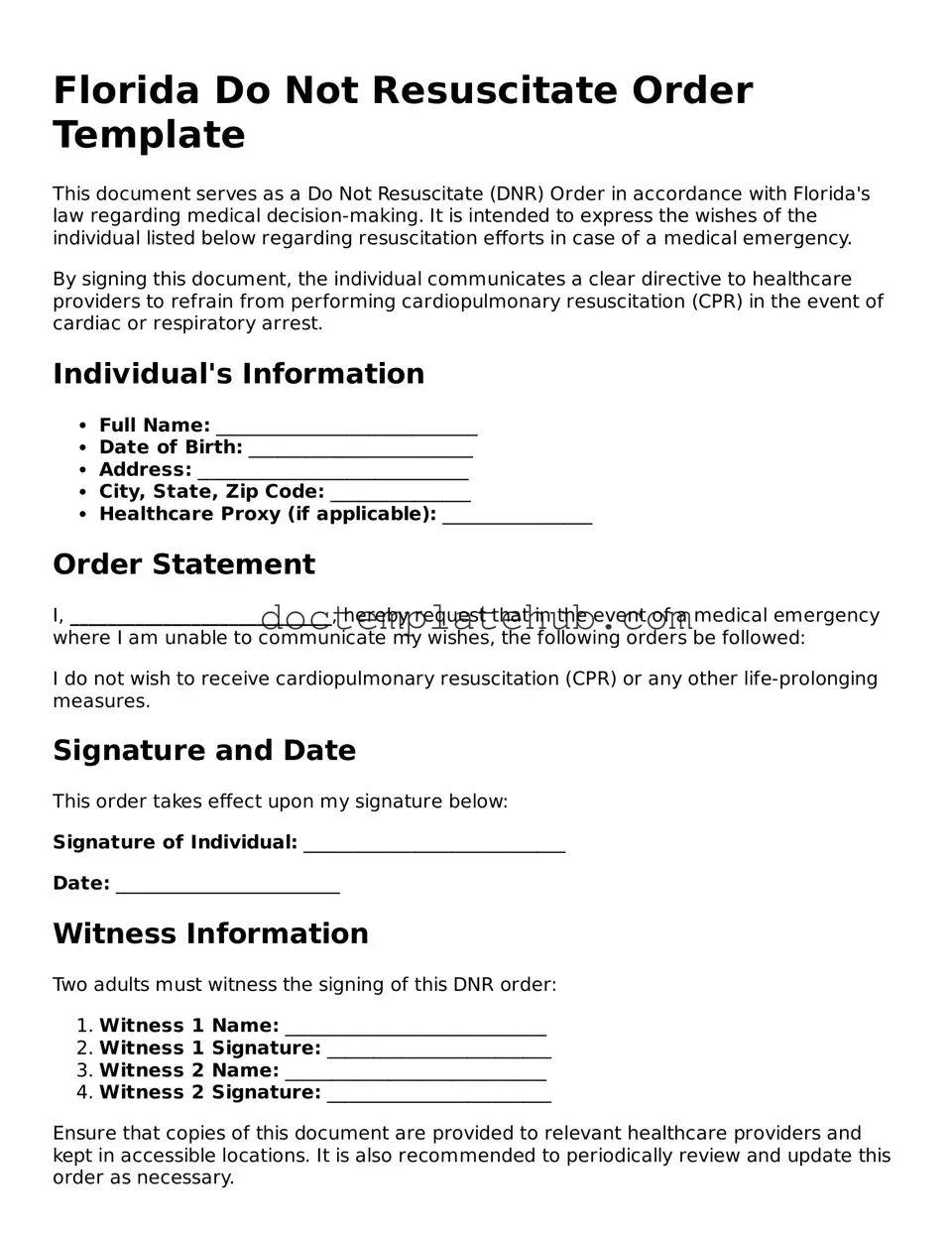What is a Florida Do Not Resuscitate Order (DNRO)?
A Florida Do Not Resuscitate Order is a legal document that allows individuals to refuse cardiopulmonary resuscitation (CPR) and other life-saving measures in the event of a medical emergency. This order is typically used by people who are terminally ill or have a serious medical condition and wish to avoid aggressive medical interventions that may not improve their quality of life.
Who can create a Do Not Resuscitate Order in Florida?
In Florida, any adult who is of sound mind can create a Do Not Resuscitate Order. Additionally, a legal guardian can make this decision on behalf of a minor or an incapacitated adult. It’s important that the individual fully understands the implications of the order before signing it.
How do I obtain a DNRO form in Florida?
You can obtain a Florida Do Not Resuscitate Order form from various sources, including hospitals, healthcare providers, or online through the Florida Department of Health's website. Ensure that you are using the official form, as it must meet specific requirements to be valid.
What steps are involved in completing a DNRO?
To complete a DNRO, you must fill out the form, which includes your personal information and the specific instructions regarding your resuscitation preferences. After filling it out, it needs to be signed by you and your physician. Both signatures are crucial for the order to be legally binding.
Where should I keep my DNRO form?
It is essential to keep your DNRO form in a location that is easily accessible to your healthcare providers. Many people choose to keep it in their medical records or with other important documents. Additionally, consider giving copies to family members, caregivers, and your primary physician to ensure everyone is aware of your wishes.
Can I change or revoke my DNRO?
Yes, you can change or revoke your Do Not Resuscitate Order at any time. To do this, you should destroy the original document and create a new one if you wish to update your preferences. Inform your healthcare providers and family members of any changes to ensure that your current wishes are respected.
What happens if I don’t have a DNRO in place?
If you do not have a Do Not Resuscitate Order, healthcare providers are required to perform resuscitation measures if your heart stops or you stop breathing. This can lead to aggressive interventions, which may not align with your wishes regarding end-of-life care. Having a DNRO in place ensures that your preferences are honored during critical moments.
